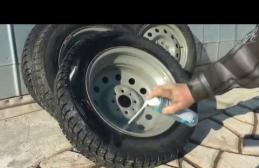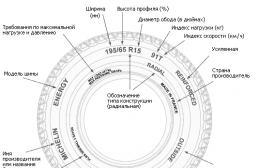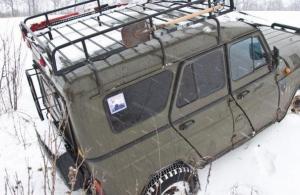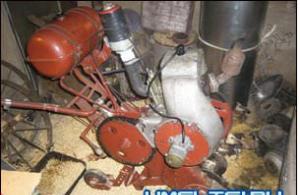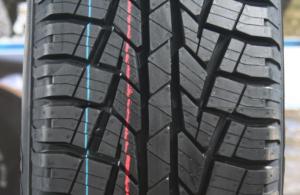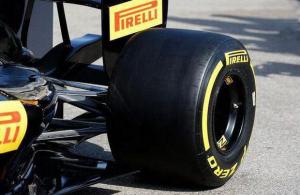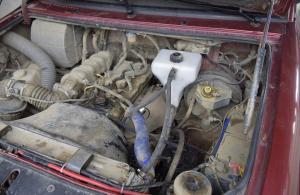In 1989, the popular but outdated Bluebird Nissan was replaced by a new model - Nissan Primera, which was produced in various modifications until 2001. There were six main versions: GT, L, GS, LX, SLX, GSX. Then the third generation Nissan Primera P12 appeared, which immediately declared itself as an ultra-modern model of one of the most famous world-famous manufacturers - the Japanese concern Nissan. The car was produced until 2007, then it was replaced by the Nissan Bluebird Sylphy.
Power plant and transmission
In Japan, the car was produced with an SR gasoline engine in two versions: 1.8 and 2 liters. At that time, diesel engines were not in demand on the Japanese market, they were quoted only in Europe. In European countries, the Nissan Primera P12 was supplied with a 2-liter turbodiesel and two gasoline engines: 1.6 and 2 liters.
The transmission was offered in two versions: a four-speed automatic and a five-speed manual gearbox. In addition, a continuously variable automatic, a V-belt variator of the Hyper CTV-M6 and CVT type was in demand. The first could be controlled manually, it was necessary to switch the fixed positions of the mechanism, which carried the given gear ratios. This transmission was combined with the SR20VE variable valve timing Neo VVL engine with 190 hp. This combination of a 2-liter engine with a CVT has not been used before. Nevertheless, by 2010, CVT transmissions have significantly replaced automatic transmissions.

Export
When the Nissan Primera P12 was introduced, sales of the popular Nissan model, the Infiniti G20, ended in America. A niche was formed that needed to be filled urgently. It is quite natural that Nissan Primera P12 replaced Infinity. In the United States, the car was supplied mainly with a manual transmission, and a number of cars were sold with an automatic transmission. There was no question of variators, the permanent distrust of the Americans to everything new was reflected. Meanwhile, in New Zealand, the car was supplied exclusively with a CVT transmission and in most European countries too.
In 2003, the Nissan Primera P12 was radically updated. The car gained such a perfect exterior design, as well as an impressively stylish interior space, that it was enough novelty for many years to come. The ultra-modern exterior is complemented by a number of interesting innovations placed inside. A small liquid crystal monitor appeared in the cabin, which had a regular purpose to reflect the picture taken by the reversing camera. But since the car does not reverse as often, the monitor can be used as a screen for watching TV channels. It became possible to receive TV programs thanks to a miniature "dish" installed under the hood.

Nissan Primera P12: specifications
During the production period of the model - from 2001 to 2007 - four main modifications were created:
- four-door sedan, with a 1.6 cc engine. cm, power - 109 hp;
- a five-door hatchback with a 2.2 cc engine. cm, power - 140 hp;
- sedan 4WD, engine 2 cc cm, power - 150 hp;
- hatchback, 1.9 TD engine, power - 120 hp
One modification with a 2.5-liter gasoline engine with a capacity of 170 hp, in the sedan body was assembled to order.
All motors were equipped with automatic four-speed gearboxes, variator units and mechanical five-speed gearboxes. The choice of transmission depended on the country to which the car was exported. European dealers did not object to CVT systems, the USA imported cars only with automatic transmission or mechanics.
Popularity
The model Nissan Primera P12, the characteristics of which were maintained at a fairly high level, was in demand all over the world. The car is still in demand today. The relatively low price also contributes to the popularity of the car.
Overall parameters of the car:
- wheelbase - 2680;
- ground clearance - 168 mm;
- length - 4565 mm;
- height - 1480 mm;
- width - 1760 mm.

Motor features
The Nissan Primera P12 engine, regardless of type, volume and power, is economical and has high environmental performance. The CO 2 content in exhaust gases does not exceed 0.3 percent, which complies with both European requirements and technical standards adopted in the United States.
Fuel filter Nissan Primera P12, combined with a gasoline pump, effectively cleans gasoline from impurities. The low content of harmful impurities in the engine exhaust is achieved, among other things, due to the perfect cleaning of the fuel in the fuel supply system to the injector.
In the interior space of the 2004 Nissan Primera P12, after the car was restyled, many interesting new products appeared, one of which can be described as shocking. The fact is that two fundamental devices, without which a car is not a car - a speedometer and a tachometer - suddenly found themselves in the middle of the center console, in its upper part. At first glance, this unreasonable movement looks at least strange.

Unexpected decision
However, without these two so familiar dials, the dashboard began to look very impressive, and a special charm appeared in it. Small standard gauges are lined up in a straight line, the design of the entire visor has become more solid, and there is a grace in it. And to observe the speedometer and tachometer, which are already on the sidelines, you can get used to in a few minutes.
After the modernization of 2004, the interior became noticeably quieter, due to the use of more advanced, increased density of materials. The quality of the seat upholstery and door panels has also improved. Adjustment of the seats in the "forward-backward" mode became possible only when the engine was running. Why this was done, the Nissan office could not explain. It can be assumed that the young children of one of the designers-developers, when the car was at the house, "rolled" so intensively in the front seats that the mechanisms simply went out of order. Maybe this is so, but, most likely, the reason here lies in deeper layers of engineering thought.

Security
The active and passive functions of the emergency vehicle support are at their best. In addition to the two frontal AIR BEG airbags, there are four more regular, but oversized airbags on the sides, two on each side. Three-point seat belts with effective pretensioners on each seat add confidence.
Special spars, on which the motor is mounted, go down with the engine at the moment of a frontal collision, while the inertia of the impact is extinguished almost to zero. Thus, under no circumstances will a heavy engine crash into the passenger compartment and destroy everything and everyone. The car is also well protected from side impacts: special profile devices are placed in the door cavities, which will take on the full force of a side impact. Of the passive devices, the car is equipped with anti-lock brakes, an exchange rate stability system, sound sensors for a dangerous roll and a warning of a dangerous approach when reversing. In this mode, a video camera also operates, giving a panoramic picture from the sides and behind the car.
Customer reviews
The Nissan Primera P12 model, the reviews of which are only positive, is still considered a reliable, economical car with a high level of comfort and good performance data.
In 1989, the Japanese concern Nissan introduced a new model - the Nissan Primera. 12 years later, the third generation Nissan Primera premiered. The assembly was carried out in Japan and the UK. In 2004, a restyling was carried out. The production of Nissan Primera P 12 was carried out until 2007.
Nissan Primera Р12 is a front-wheel drive car of the D class in the body of a sedan, liftback (hatchback), station wagon. Japan also produced four-wheel drive vehicles for the domestic market. The model is equipped with both left and right-hand steering options.
The configuration included gasoline engines with a volume of 1.6 liters., 1.8 liters., 2 liters., 2.5 liters., Diesel engines 1.9 liters. (Turbodiesel), 2.2 liters. with 5 (6) speed manual gearbox and 4-speed CVT.
The third generation of the mid-size car Nissan Primera was introduced in 2001. For those times, the exterior and interior were extremely futuristic. But even now Primera has not lost its relevance and looks quite fresh.
Body types:
- sedan;
- a hatchback, which is more correctly called a liftback - it has a separate, albeit short, "tail" in the back;
- station wagon with a sloping fifth door. Doesn't look like a utilitarian "barn" at all.
Place of production:
- Kyushu, Japan;
- Sunderland, County Tyne and Wear, UK. The quality of the English assembly is generally lower, but not critical.

Weaknesses Nissan Primera (P12) 2001-2007 release
The operation of the car on all continents of the globe in different natural conditions, the organization of the assembly of the car revealed the following shortcomings of Nissan.Examples of 2001-2007 release:
- Engine
- Valve train chain.
- Piston rings.
- Catalyst.
- Transmission
- Manual transmission pillows.
- Crunch in the manual transmission.
- Variable speed drive.
- Suspension
Front:
- Racks, stabilizer bushings.
- Steering rack.
Back:
- Stabilizer's pole.
- Weak springs.
It should be noted that cars from 2001-2002. release were completed with timing chains that did not meet the requirements for the level of transferred loads. The material used in the timing chains does not provide reliable strength and resistance to stress.
A disease appeared - the chain was stretched and required replacement by 170 thousand km. run from the declared resource of 300 thousand km.
Piston rings.
The fact was revealed that for gasoline engines 1.6, 1.8, 2L. Between 2002 and 2003, poor quality piston rings were installed. Rings wear out quickly, resulting in increased oil consumption. In case of increased consumption, pay attention to the condition of the piston rings. An untimely response to this problem can lead to an overhaul of the engine.
Catalyst.
In engines of 1.6 and 1.8 liters. there is often a problem with the catalyst. The rapid deterioration of the catalyst mesh leads to its delamination. Particles enter the combustion chamber. Seizures appear on the cylinders. The result: additional oil consumption.
- It is important to fix this problem in a timely manner.
- Advice, check the condition of the catalyst as soon as possible.
- According to experts, when replacing the catalyst every 70 thousand km, this problem can be completely eradicated.
Oil leaking from the valve cover.
With the advent of the 3rd generation Nissan Primera models, the Nissan concern began to complete engines with a plastic valve cover in 2001. Thus, the tightness of the valve space began to be ensured by the oil seals of the candle wells glued to the cover body and closed with special plates.
- The big disadvantage of this design is the increased likelihood of leakage when oil can penetrate into the spark plug well.
- It is manifested by a loss of engine power, a bad plant, a malfunction of the engine (troite).
- In this case, the valve cover must be replaced. Replacement of individual oil seals is not provided.
Manual transmission pillows.
Nissan Primera 2001-2007 release can be found in the secondary market with mileage on European roads, the roads of the Russian Federation and Japan. Despite the specifics and features of car operation, unpleasant vibration may periodically occur in the steering wheel, in the vehicle interior. Be sure to check the ICCP cushions. As a rule, their resource is designed for 100 thousand km.
"Crunch" of the manual transmission when shifting
Some owners sin on a five- or six-speed (depending on the specific engine and market) "mechanics" - over time, it begins to "crunch" when switching. One of the reasons is oil overflow. It needs exactly three liters, but often when replacing "they are not greedy" and shove up to five. However, synchronizers are also subject to severe wear and tear, especially if handled roughly.
Delicate variator
Right-hand drive "Japanese women" were equipped with a conventional "automatic" with a torque converter. And a V-belt CVT was installed on British-assembled cars. Its design is quite successful, although, in general, such boxes are considered less reliable. You just need to remember that the variator does not like "racing" - it quickly overheats, and the cabin starts to smell of "fried" ATF oil. By the way, bad service can also "sentence" the box much faster than planned - it is very sensitive to such "treatment."
Racks, front suspension stabilizer bushings.
Operation of the Nissan Example of the 3rd generation in conditions of poor-quality road surface leads to increased loads on the front struts and front suspension stabilizer bushings. Violation in work is manifested by the presence of tapping. Therefore, experts recommend replacing every 30 thousand km. The node itself is very reliable. However, in the front, it is often necessary to change the anthers (even the original ones, not to mention substitutes) - they are torn.
Steering rack.
In a used Nissan Primera P12, special attention should be paid to the steering rack. It requires constant monitoring of the tightening. One of the design mistakes on this model. In particular, the oil seals (top and side) "snot". A rail after overhaul is the norm on such a machine, even if it is only two or three years old. But the operation itself is not burdensome for the owner from a financial point of view.
In case of failure, it cannot be repaired.
Rear suspension stabilizer struts.
The car is equipped with struts from Almera (class C), and Example 12 is presented in class D. The struts do not withstand constant loads. Anthers with bumpers break. The settling of the springs does not provide protection against impacts to the body. The result is cracks in the rear of the body.
Weak springs.
Despite the moderate suspension stiffness, the 3rd Generation Examples are equipped with weak rear springs. Their subsidence creates the problem of absorbing shock energy in the suspension. Thus, the blows fall on the body of the car itself.
The main disadvantages of the 3rd generation Nissan Primera
- The location of the dashboard in the center.
- Hard and hard plastic vibrates around the front glove compartment and center dashboard.
- There is no steering wheel adjustment for reach.
- The native radio does not read MP3 discs.
- A short front armrest does not provide driver comfort.
- The engine compartment is very tightly "packed" - it is difficult to get to individual components and assemblies.
- Weak paintwork. Rear arches. The bottom of the rear of the car.
- Sedan. Rear rack: awkward loading dock.
- Low level of noise insulation of arches.
- Limited rear view through mirrors.
Conclusion.
The 3rd generation Nissan Primera has undoubtedly left its own mark on the history of the automotive industry. The bold and unforgettable design of the car, technical characteristics, fell in love with many millions of motorists.
Today, when choosing a supported model of the 3rd generation Nissan Example, it should be understood that the reliability of your car can be increased only through personal desire. Carry out a full diagnosis, eliminate breakdowns, properly operate a personal vehicle.
P.S: Dear car owners, a huge request, if you found frequent breakdowns of any units or parts of this car model, then let us know in the comments below.
Was last modified: April 3rd, 2019 by Administrator
CategoryMORE USEFUL AND INTERESTING ABOUT CARS:
- - Buying a used car is always associated with certain risks. Reliable and economical parquet SUVs in the middle price segment ...
- - Just 15 years ago, Renault Samsung and Nissan developed the Nissan Almera Classic. The new model was created on the basis of Nissan Pulsar ....
- - Nissan Patrol is the car that all off-road driving enthusiasts know. This model, over the course of five generations, has been correct ...
4 posts per article “ Weaknesses and disadvantages of the 3rd generation Nissan Primera with mileage”
- Valentine
Insufficient thickness of the paintwork, the paint layer in Examples is thin. Of course, there is a layer of zinc everywhere and it protects the metal reliably, but getting a chip is as easy as shelling pears.
You should especially pay attention to the second-hand copy, which was operated in Moscow, where poisonous reagents are poured onto the roads in huge quantities - often because of this, you have to repaint, or even completely change the thresholds even on cars that have not been in an accident at all. Rear wheel arches are extremely susceptible to corrosion - this is a disease Examples. Therefore, it is not worth saving on additional processing. - Igor
Many owners complain about the so-called "crickets". The fact is that the top of the panel is made of soft material. But everything that is below the conventional "belt" line is from much cheaper. Over time, after 20 thousand kilometers, or even earlier, creaks are heard from everywhere - and this is very annoying. Identifying a specific location is almost impossible. There is only one way out in this case: to carry out a complete disassembly - and glue everything with special materials, of which there are a great many on sale.
The silver paint in the interior wears off quickly. The buttons on the steering wheel are made of plastic "chrome". Over time, the inscriptions are erased on it, and then the paint. Roughly the same applies to the gear lever, which has a similar pad. In addition, there are fleecy inserts on the doors. The traces of wear are perfectly visible on them. - Vladimir
In general, there are not many weaknesses in my 2007 examples. This is a pretty reliable and original looking car for those who do not tear from traffic lights.
I would advise you to choose very carefully, paying special attention to the steering. - Michael
We bought the 2007 example in 2012. Since then, there have been no problems with the car. Only a couple of years ago the shruz was changed, the steering rack was repaired. About the salon, it rattles. No noise. Soundproofing yes, there are errors ... but the price of the car is not high. Chips have appeared. Rye does not take. Even after several years. Bumper dear! Sooooo strong! The trunk is the coolest! Accommodates_ALL! Super auto! It is a pity that the release was stopped.
The last member of the Primera family (index "P12" - the third generation), rolled off the assembly line in 2007 ... and to this day this model has no successor. Yes - "Primera" has neither outstanding driving characteristics, nor powerful charisma (like the luxury "classmates"), nor the "super-reliability" of a number of competitors from Japanese manufacturers.
But, at the same time, "Primera" cannot be called an outsider in comparison with its "classmates". Rather, it is an inexpensive and strong middle peasant and, among similar cars, undoubtedly, the "golden mean". The main highlight of the model is the extraordinary design that makes this car original and still modern.
Nissan Primera was produced in 3 body styles: hatchback (five-door), station wagon and sedan. Outwardly, the hatchback is practically indistinguishable from the sedan and loses a little to the station wagon in terms of the volume of the luggage compartment and practicality.

The history of "Examples" began in 1990. Then the first generation of this model (received the index "P10") replaced the legendary Bluebird. The receiver was decent, of the obvious shortcomings - only a body unstable to corrosion.
At the end of 1995 (at the beginning of 1996 in Europe) the second generation of the car was released - "Primera P11" (known in the USA under the name Infiniti G20). The second generation was distinguished by many sports achievements on different continents. In 1999, the "R11-th" was subjected to significant restyling.
And in 2002, the third, final, generation "Primera P12" was presented (at the same time, sales of the Infiniti G20 in America ceased). This car was popular for a long time, but in 2007, due to falling demand, its production was discontinued.
Speaking of technical characteristics, the Nissan Primera was equipped with only four-cylinder engines. Gasoline had a volume of 2; 1.8 and 1.6 liters (140, 116 and 109 hp), and turbo diesels 2.2 and 1.9 liters (138 and 120 hp respectively). It was equipped with a standard transmission - a five-speed manual gearbox (a six-speed one was installed on a two-liter and turbo diesel). Moreover, for the 1.8-liter version, an automatic (four-band) was offered, and a variator for a two-liter one.
In the secondary Russian market, dealer cars mainly appear, as well as those copies that were imported from European countries before 2009.
The interior of the salon "Examples" of the third generation is quite original. The instruments are located in the center of the front panel. The console looks like a ledge with knobs and keys. The car is very practical. The front seats are very loose. The second row is comfortable for two people, but three are cramped. Tall people in the sedan will find the ceiling rather low.
The body of "Primera P12" has a durable galvanized coating, so it is not subject to corrosion.
The electrical equipment is not perfect. The car does not start well at temperatures of -20 ° C and below. The problem is removed by reprogramming the engine control unit (on cars before 2003).
There is a tendency for the xenon headlights to burn out, under which a block that includes a "xenon" (ignition unit) is installed - under the influence of condensate appearing in the details of the optics, the electronics periodically failed. You can't find it in spare parts - you have to completely change the headlight.
When he still met in Nissan dealerships, three levels of equipment were offered: Comfort, Elegance, Tecna.
- The basic Comfort version has two airbags, power accessories (heated mirrors, electric front window lifts), an audio system, climate control, a multifunction steering wheel and a computer.
- Elegance adds side airbags, cruise control, rain sensor, alloy wheels.
- The Tecna version - the flagship, originally had a CD changer, xenon headlights and a tire pressure sensor.
In European countries, the car was sold in Tecna, Acenta and Visia trim levels. The set of equipment was close to the Russian level of equipment, except that there were six airbags in the standard equipment.
We have many gasoline modifications of Primera, but the Nissan Primera turbodiesel is a rarity, delivered from Europe by "gray" routes.
The design of gasoline engines is very similar, only the two-liter version has balance shafts. The timing belt is driven by a metal chain with a service life of up to two hundred and fifty thousand kilometers. But when you replace it, you have to remove the entire engine, as a result of which the cost of repairs increases significantly.
The most reliable, with a modest volume of 1.6 liters, is recognized as the basic "four", providing a power of 109 hp.
An engine with a volume of 1.8 liters consumes oil excessively (replacing rings helps a little, but after about twenty thousand kilometers, everything returns to the previous state of affairs - oil consumption increases). Sometimes it is necessary to change the entire block with the crankshaft and pistons (cars that were no longer under warranty service were subjected to similar repairs).
The two-liter engine also suffered from gluttony, but it was cured on post-styling cars by reprogramming the control unit and using a catalyst with a larger honeycomb.
All Primera modifications are susceptible to damage to the third engine mount (perhaps this is a constructive miscalculation).
The automatic machine and the variator in the "Example" work without failures. But the "mechanics" presents surprises more than once - the reason for this is the defects of the bearing installed on the secondary shaft (if noise appears in the bearing, it must be changed immediately, if this is not done - the bearing will jam and the only way out is buying a new box, the cost will hardly please the owner of the car ).
With its aggressive exterior, Nissan Primera is not one of the dynamic cars. Its handling is far from perfect, and the car cannot boast of smooth running. "Primera" is a "classic means of transportation" - quite reliable and modern in its age, but without much spark and without glaring discomfort.
The chassis is traditionally designed - MacPherson struts in front, in the back - a conventional beam (semi-independent).
For this car, the best choice would be a two-liter engine. However, if you have opted for a Primera 2.0 equipped with a variator, a test drive is desirable (the smoothness of the work is exceptional, but whether you like its some "thoughtfulness" during acceleration is a question).
The suspension is durable. Many of its elements withstand the prescribed average resource. The front brake pads cover 25,000 to 35,000 kilometers. Rear brake pads hold one and a half times longer. Front anti-roll bar struts usually wear out after 35,000 to 60,000 kilometers. Shock absorbers will last about 100,000 kilometers without replacement, and possibly more.
In any case, Nissan Primera will be a good purchase for any person who wants to stand out in the crowd, but does not have the opportunity to pay serious money at the same time. The quality, operating costs and reliability of this car are the golden mean: extravagant and inexpensive.
In 2001, Nissan introduced the world Nissan Primera P12 - the third generation of Primera cars, replacing the Bluebird model in Europe. The car was assembled in conveyor mode from 2002 to 2007, but the design has not lost its modern appearance even now. It is a pity that the production of the model was discontinued in 2007. It was replaced by the Nissan Bluebird Sylphy.
The reason for this was the Japanese dissatisfaction with the build quality of the car produced in the UK. In the opinion of the Japanese, the reliability of the model does not meet Japanese standards. The Japanese have a mutual dislike for the Europeans. The former were scolded for the lack of the vaunted Japanese reliability of the machines assembled by the Europeans. The second did not like the look very much, which did not make the new car popular in the sales market.
Primera P12 received moral support from Russian motorists. In the middle class, the model confidently took its place in the leading three. Demand has exceeded expectations. For 6 years, 40,000 cars were sold, and 2003 was marked by leadership in the sales segment. The appearance of the hero in the secondary market prompts a review of the technical condition.
Engines for Nissan Example P12
Among Russians, cars equipped with a gasoline engine with a displacement of 1.8 and 1.6 liters have gained popularity. The share of demand for this category reaches eighty percent. The rest comes from cars with 2-liter engines.
On the secondary market in the European part of Russia, there are Primera and other configurations, but this is rather an exception. These are pure Japanese with a 2.5 liter engine operating on the principle of direct injection of a fuel mixture. There are 2-liter configurations with increased power up to 204 liters. with. These motors have a changed valve timing and valve travel. Diesel Europeans with a purely Japanese 2.2 liter engine are rare. or French 1.9.
There are few used Primera diesel engines on the market. They require careful analysis, as they are characterized by the intervention of car mechanics during the warranty period. Change the turbocharger, intercooler or engine. Mostly this is a purely Japanese technique.
Cars with French engines in a different state. The owner does not deliver much worries, except for the reaction to the quality of diesel fuel. However, this is not an indication of the superiority of the French engine. The secret lies in the motor resource - Europe is closer.
Two hundred and fifty thousand kilometers is a feasible distance for a gasoline engine. Periodically, it is required to adjust the valve clearances with washers, change the drive chain on the gas distribution mechanism after 130,000 kilometers. When operating the machine in high-speed modes, replacement will be required more often. The premise is that the engine is cold and vibrates.
Replacing the chain requires removal of the motor, which collectively costs more than $ 1,000. Correction is required, as there is a risk of the motor stopping at high speeds or difficulty starting. The reason for this is an error in the camshaft sensor.
Practical analysis of engines with a volume of 1.8 and 2.0 liters. revealed on the first Primera the weakness of the catalytic converter combined with the outlet manifold. The result of the malfunction was breakdowns in the piston group. The automatic control system reacts to a fault with a delay. The warning light comes on late. During the signal delay time, the honeycomb ceramics gets inside the cylinder. If such a misfortune occurred during the warranty period, then the rings planted on the outer surfaces of the pistons, catalytic manifolds, and in advanced cases, the engine, changed without any problems.
Self-service catalyst replacement is priced at $ 600. At 4,000 US dollars, the replacement of the cylinder block for the 2-liter engine will be. Attachments are not taken into account. Taking an already used engine that has worked in Europe and Japan, the repair costs will be $ 1,500 - $ 2,000.
Non-dynamic behavior of the engine and increased oil consumption become a harbinger of future breakdowns. Practice shows that when approaching 60,000 kilometers in especially neglected cases, the engine consumes up to one liter of oil per 1,000 kilometers.
The Nissan company took into account the operating shortcomings of the engine and, through new pistons aimed at increasing oil drainage, and modernized oil scraper rings, improved performance. The two-liter engine, in addition, was equipped with the firmware of the control unit, which protects the converter. An additional plus manifested itself in the winter starting of the engine - candles are not poured. The catalytic manifold has also undergone a change - the filler honeycombs are located farther than the engine.
After the intervention of Japanese engineers, the operation of air flow sensors became more reliable. Who remembers, then for old motors the sensor stopped working before reaching the one hundred thousandth milestone in the engine mileage. Russian car owners changed the sensors to cheaper ones from the VAZ-2110. If you change to a standard sensor, it will cost $ 1,000.
Operation shows that as a result of the re-equipment of the engine, shortcomings remained - the rear engine support. Its service life does not exceed 70,000 kilometers. The replacement cost is $ 70.
Transmission
Five-speed manual transmission (manual gearbox) works exactly up to a run of 100,000 kilometers. This is the threshold for the planned replacement of the friction clutch - $ 300. Here the bearings of the manual transmission shafts are buzzing. It is better to fix the flaw by spending $ 600, since when fixing the bearing, the correction is achieved by going through the box, which will cost more.
There are 6-speed manual transmissions on cars with a 2-liter engine or automatic transmission, coupled with 1.8-liter engines. Reliability is consistent with the Japanese approach with proper care:
- it is required to replace the working fluid in the automatic transmission (automatic gearbox) after every 60,000 km;
- for manual transmissions, an oil change is recommended every 80,000;
A used car is manifested by a fuzzy gear connection to the manual transmission. Sharpness is restored by replacing the bushing in the drive rod. It is inexpensive.
Assessing the condition of the manual transmission, the 5-speed AV709VA is recognized as the worst instance. Increased operating noise and difficult gear changes remind you of the first signs of wear.
The variator on 2-liter cars covers 150,000 kilometers without unnecessary intervention. Then the worn V-belt needs to be replaced. Officials correct for $ 6,000. Turning to a specialized car service, it is likely that the costs will be reduced to one thousand.
If the rotation sensors on the drive and driven pulley fail, the V-belt will have a shorter life. One hundred thousand kilometers is the border of the threat. The variator works in this case in emergency mode. The cones of the pulleys move and limit the speed of movement to thirty kilometers per hour.
A situation where sensor failure occurs at an increased vehicle speed becomes critical and a jerk in the transmission threatens to break the belt. The likelihood of a belt breaking also occurs at a reduced speed in cases of blocking of the front wheels when parking on a curb.
If the belt breaks, then no need to tow Primera, it is better to use a tow truck. Towing may damage the contact surface of the pinion and pulleys from parts of the torn belt. The cost of fixing it doubles or triples. Replaced belt eliminates troubles.
The transmission of the "Japanese" for an accelerated start is mated with a torque converter, after which, guided by the commands of the control device, the electric motor shifts the valve body stem. As a result, the cones expand or move closer together.
On the first cars, the electric motor failure occurs when reaching 100,000 km of run. The pulleys stop working, as a result, the gear ratio is fixed. As a result, the machine changes its speed only within the limits of the engine speed. The malfunction allows you to independently drive to the car service. The stepper motor, along with the work, will cost $ 400. A planned replacement is foreseen after every 60,000 kilometers of travel.
Suspension on Example P12
Suspension first Nissan Primera P12 (Photo further) were endowed with weak stabilizer struts. Working capacity was limited to 30,000 km. Since 2004, the automaker has made changes, increasing the working period by 2 times.
When updating the model, the ball joints in front were ignored. The work assumes a mileage of 50,000 kilometers. The original lever in the kit costs $ 200. If you tinker with an unintended replacement, it will cost $ 30-40. The work of bearings in hubs and shock absorbers is 2 times more productive. Replacing the shock absorbers will cost $ 250 for the front shocks and $ 120 for the rear ones.
The Scott Russell device in the rear suspension is robust. Officials change worn-out silent blocks and ask for $ 2,000. By contacting a car service, the costs will be $ 300. The car manufacturer does not provide for the repair of the steering mechanism. He is a rack and pinion sample. The wear of two identical gear racks or bushings at the output leads to the replacement of the mechanism - $ 1,000.
The steering rods are loose when traveling 100,000 kilometers. The seals on the steering shaft are leaking after 70,000 kilometers. Russian craftsmen take on the correction of shortcomings by using rubber bands of acceptable size and installing non-model steering rods. The knocking steering wheel control is corrected by a new $ 75 steering-rod cross.
The power steering pump ($ 500) will malfunction if the fluid level in the reservoir is not checked. Sealing tubes and hoses lose their elasticity over time, which reduces the volume of the working fluid. Keeping the braking system in good working order will require the expense of the rear calipers. The cost of the original is $ 500 per unit.
The anti-lock braking system (ABS) indicator illuminated is an unpleasant signal. The reason is the wheel sensor. The malfunction will be fixed for $ 300. However, mainly the indicator lights up due to deteriorated electrical wiring.
The body of Primera is galvanized in different ways. The evaluation criterion is the method of galvanizing. Only 2007 cars were treated with 2-sided galvanized zinc, with full immersion of the body in zinc electrolyte. This method reliably protects the body. The rest of the predecessors were processed partially according to the type of cold galvanizing - by applying a zinc-containing coating to critical parts of the body. When buying a used car, attention is paid to the year of manufacture and the location of cavities and joints.
Humidity does not spare the car electronics. The taillights suffer from outdated wiring and circuit boards. Replacing each will cost $ 100. Difficulties occur with the ignition unit, designed to convert direct current in the electrical network of the machine into high-voltage voltage necessary for the functioning of xenon headlights. The headlight does not work without it. Not for sale separately, only complete with headlamp. The price per set is $ 800.

